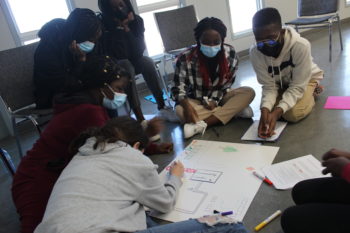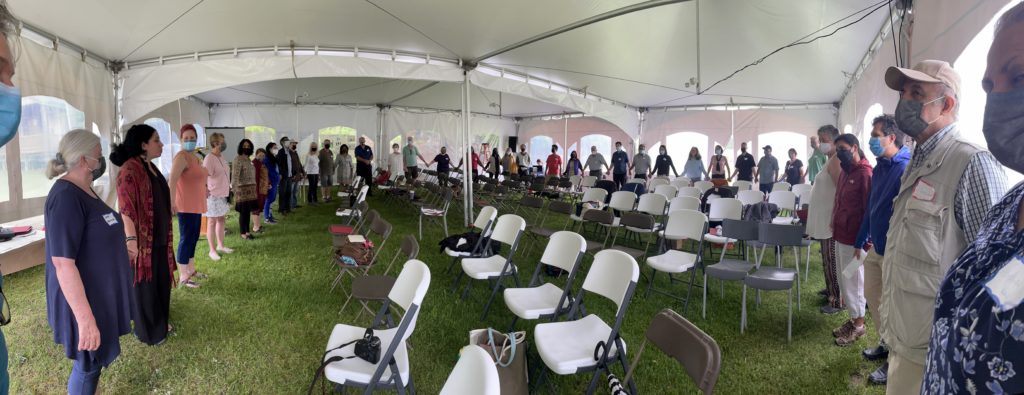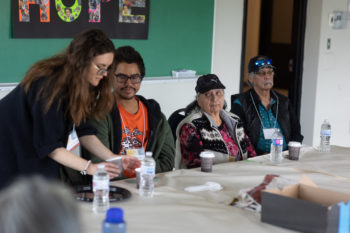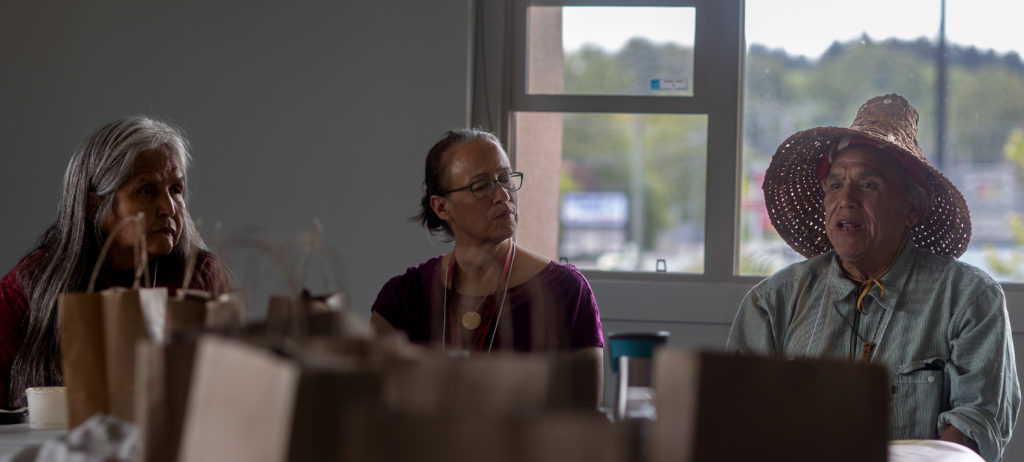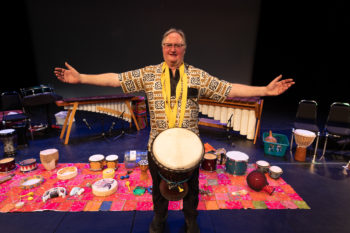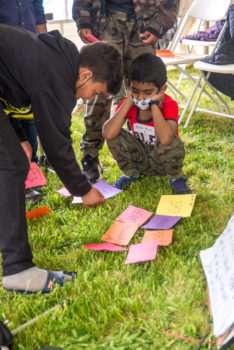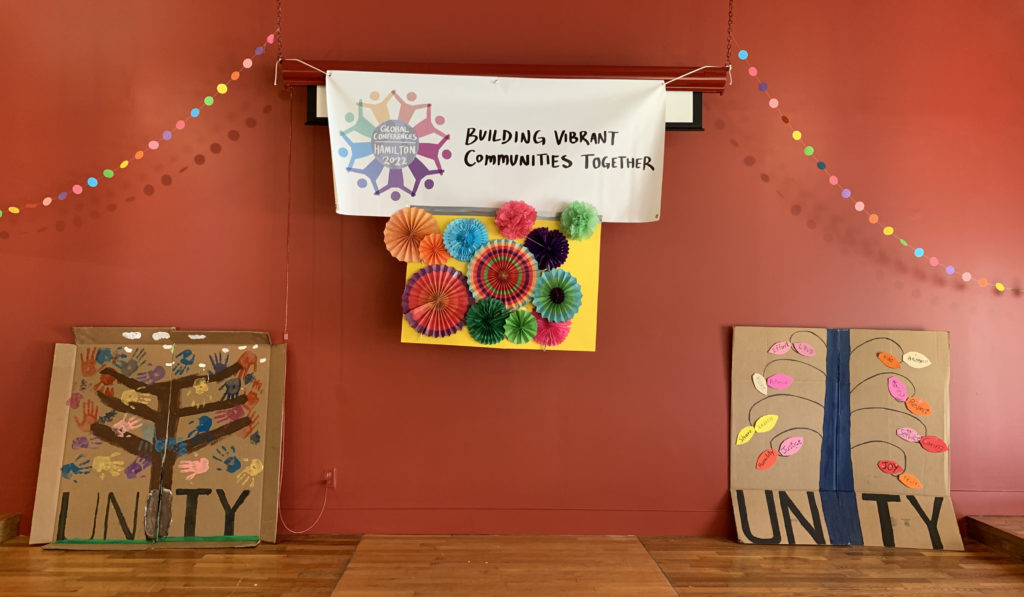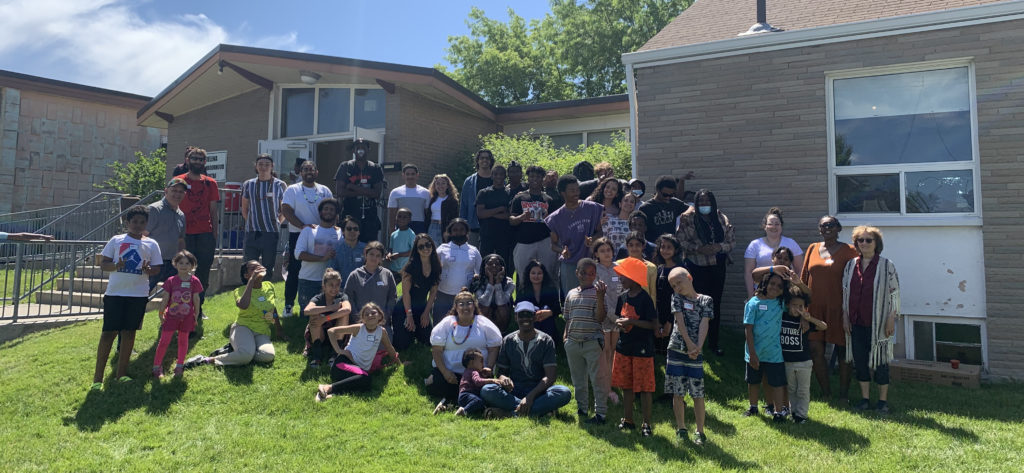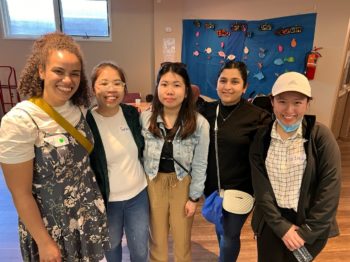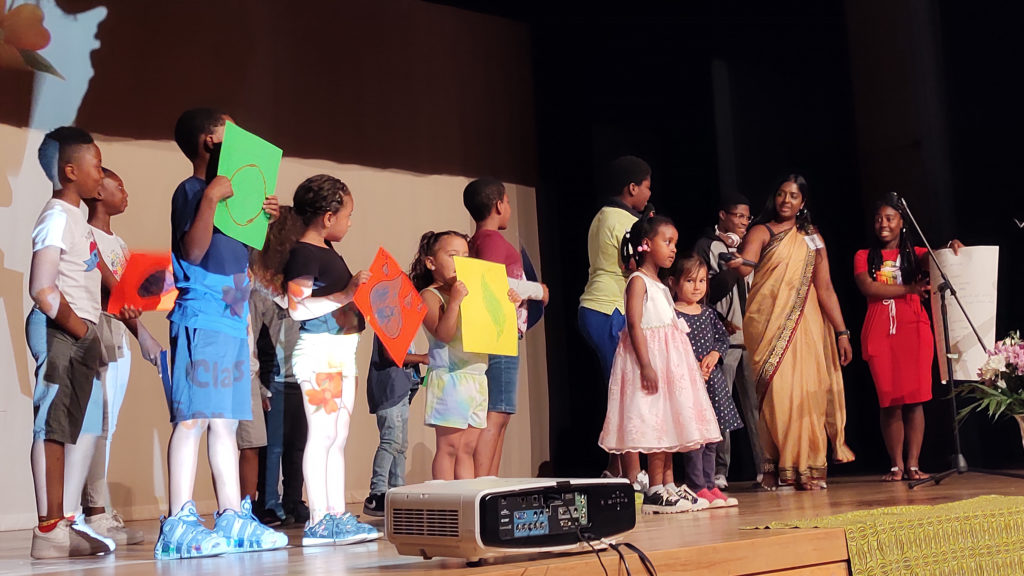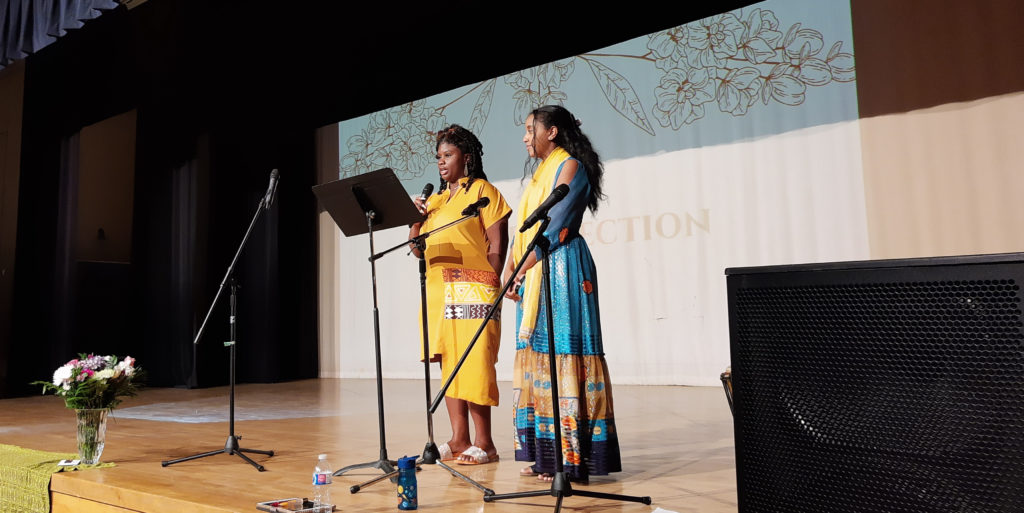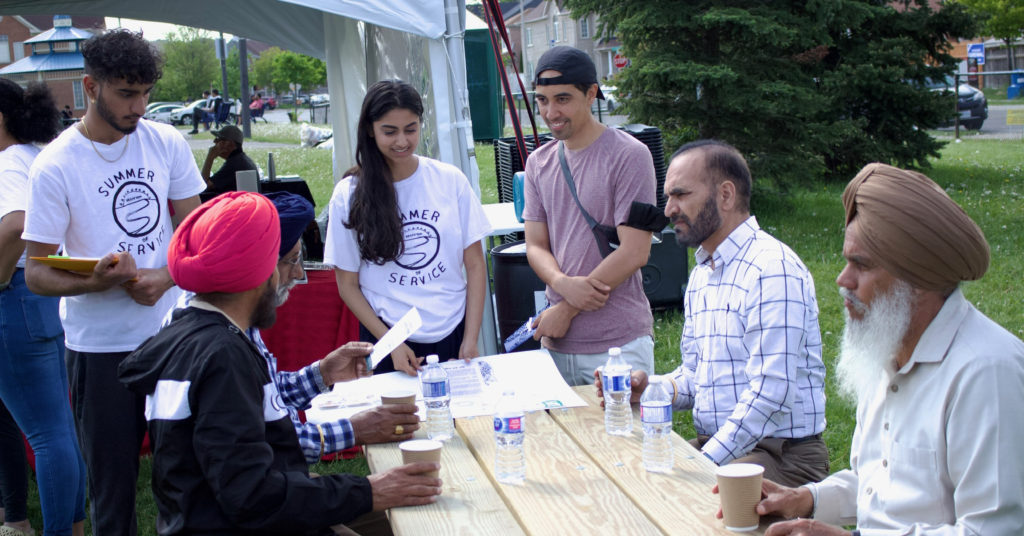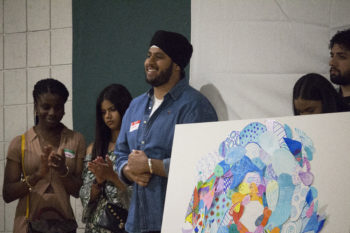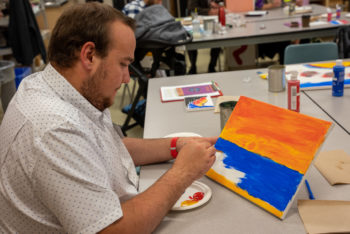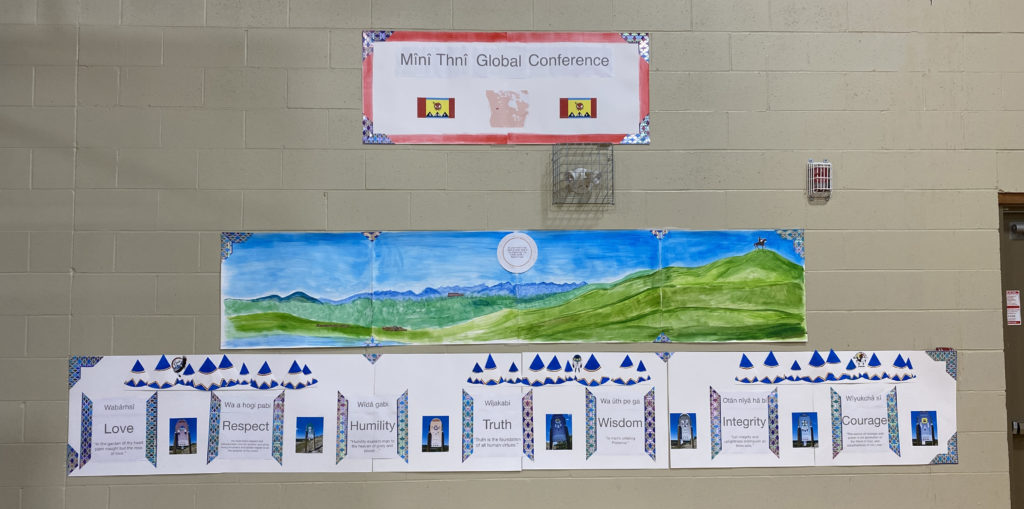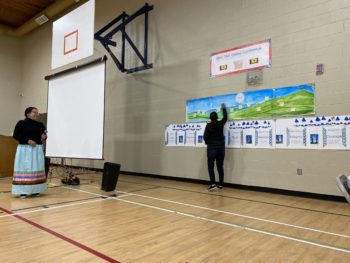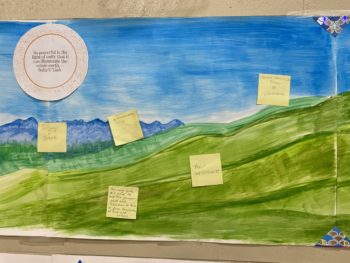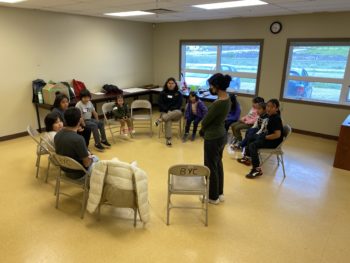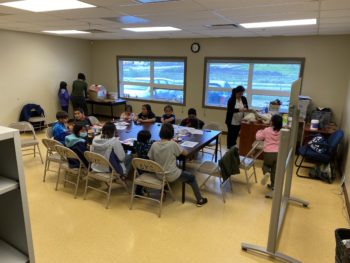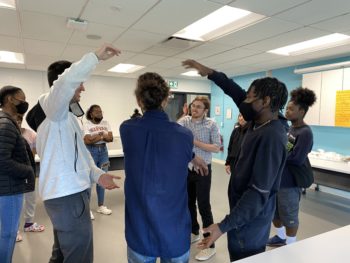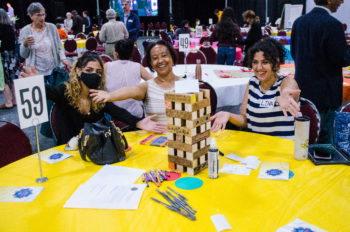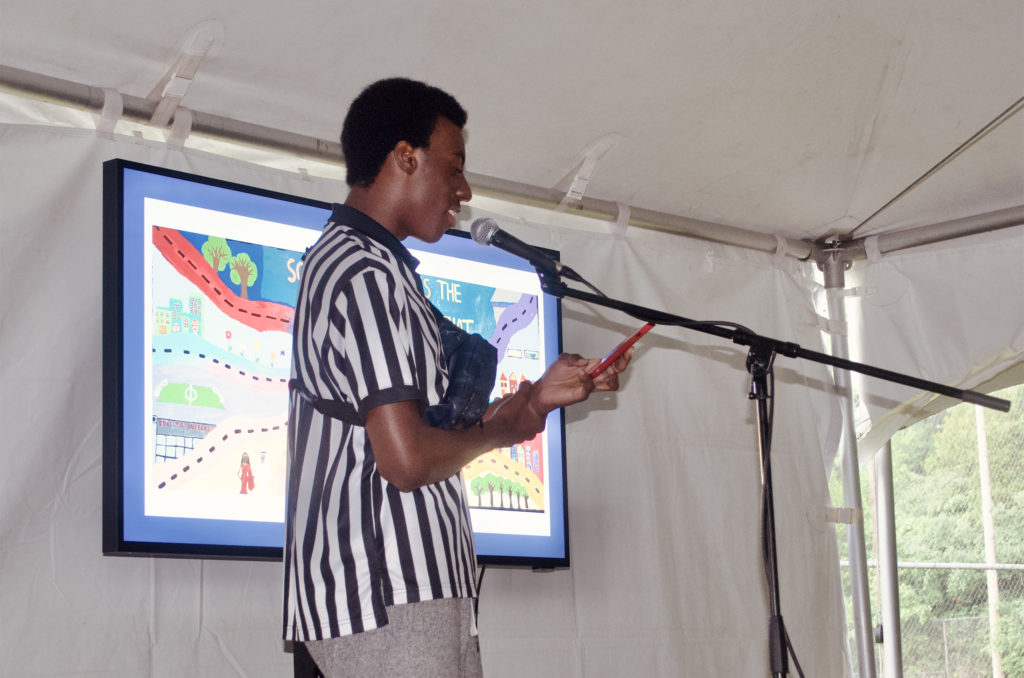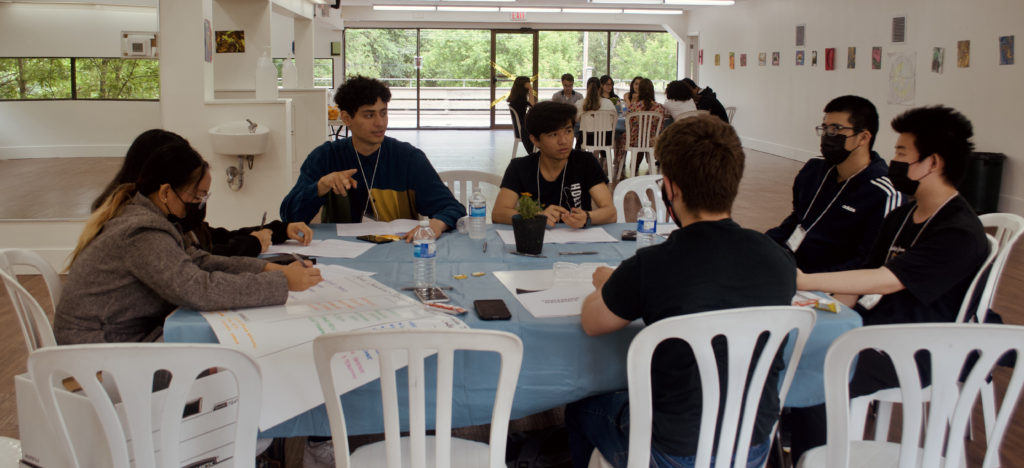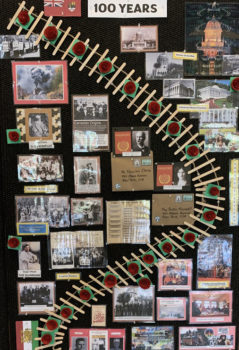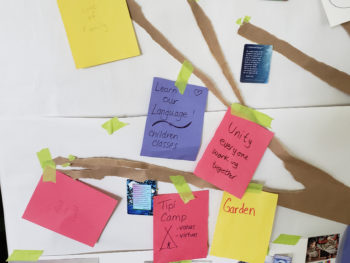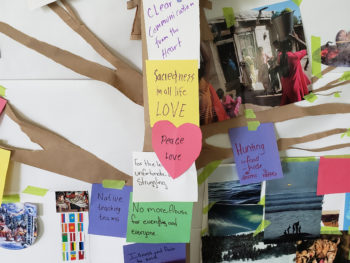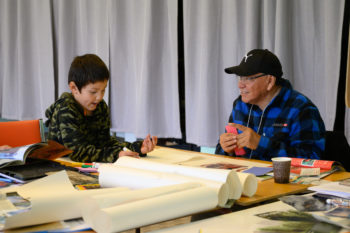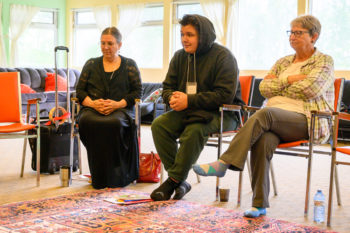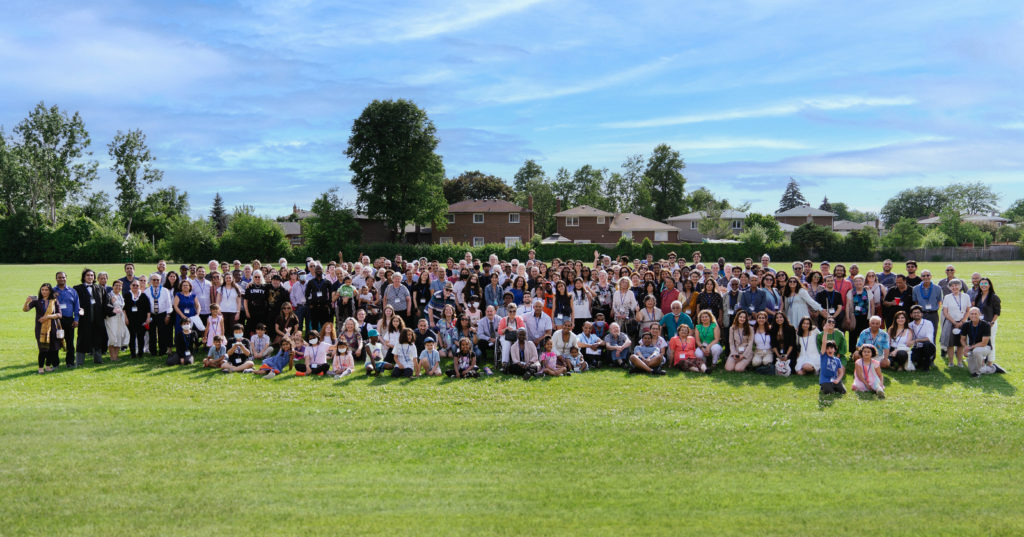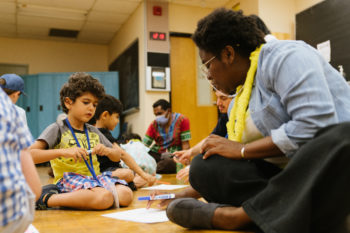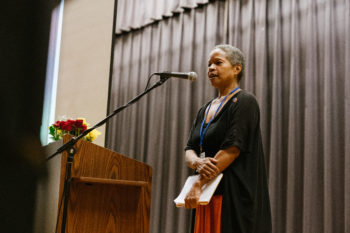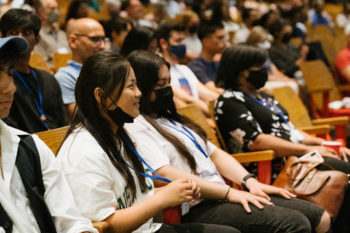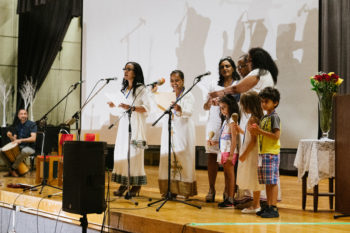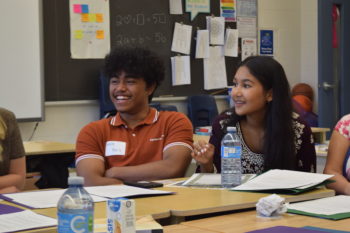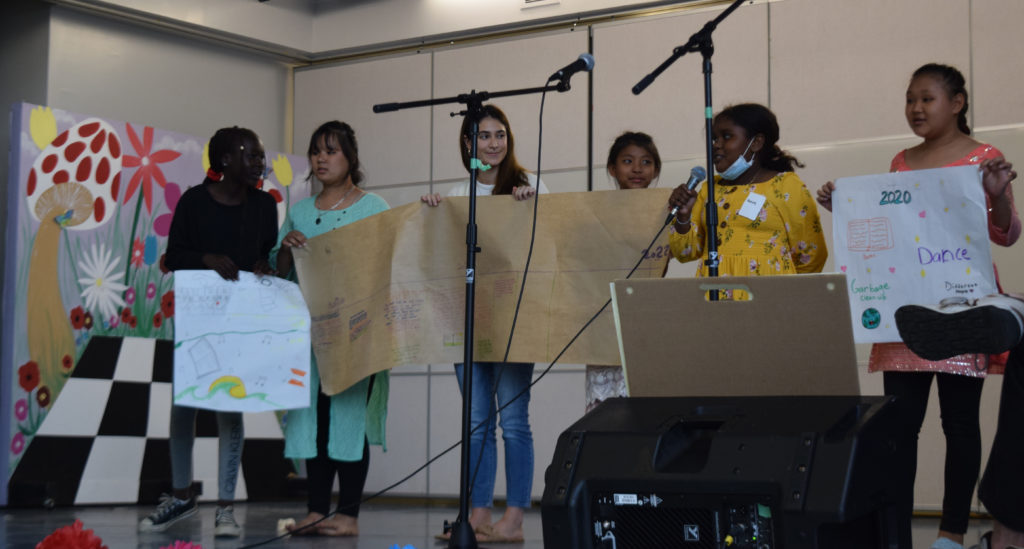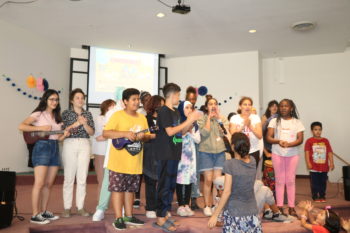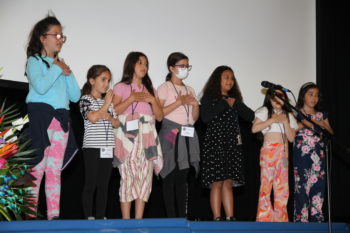Photos from the second wave of conferences across Canada
Calgary, Alberta – Rundle neighbourhood and Calgary East Sector
Ontario – Eastern subregion (Renfrew, Lanark, Leeds and Grenville, Cornwall, Kingston, and Brockville)
Participants at the Eastern subregion conference plan to continue conversing on the conference themes over the next few months. One participant described the experience of friends from her locality who had been recently introduced to the community-building process, saying that after attending the conference, these friends now “see themselves as part of the community, and they’re engaged in the planning of activities for the upcoming months.”
British Columbia – Cowichan Valley
Ontario – York North, Simcoe, and Muskoka
A children’s class in Aurora banded together with junior youth to perform during the conference. The group decided to meet twice a week after school for three weeks to prepare. Parents got together to make the props, design, and order t-shirts for the performance.
Prince Edward Island – Clyde River
One friend from the Hillsborough neighbourhood in Charlottetown, P.E.I. described the experience of inviting families from the neigbourhood to the conference:
“Initially we visited all the families that we know in Hillsborough and invited them to the Clyde River conference. Then we realized…it was hard to convey a true understanding of what the conferences were while just standing at the door. We decided to change our strategy and visited a few key families, spending one and a half to two hours going through the facilitator materials with them and then asking them to invite the people around them…about 60 to 70 percent of the people who ended up coming to the conference came because they had been invited by people from their own culture who knew better than we did how to describe the conferences in a way that engaged them.”
British Columbia – Sooke, Colwood, Langford, Metchosin, and Highlands
Hamilton, Ontario – McQuesten neighbourhood
The following reflections are from a participant at the McQuesten conference:
“Gathered in a circle of chairs, the youth participants delved into a discussion regarding their role in their neighbourhood—surrounded by decorations they’d put up themselves in a space they’d designed themselves, and uplifted by singing and the beating of drums. The McQuesten youth greatly contributed to not only the youth portion of the conference, but the planning of the conference as a whole, to the point they felt they “owned” the space. Their conversations on the constructive forces aiding them within their community as well as the destructive forces hindering them prompted the initiative to share their thoughts with other youth in their neighbourhood.
The youths’ raw spirit roused the adults into pursuing plans of their own as they discussed the challenges facing their community: lack of spiritual and environmental education, littering, food insecurity, poverty, ageism, and racism. Solutions they identified included creating spaces which could cultivate unity, meaningful conversations, and respect amongst neighbours in order to develop common community goals. The idea of multi-faith devotionals was agreed upon as a starting point for the McQuesten neighbourhood’s advancement towards vibrancy, cooperation, and self-sustenance.”
Winnipeg, Manitoba – Fort Garry South
Toronto, Ontario – West neighbourhoods
The participants at this conference contributed creative expressions unique to their neighbourhood’s culture. One group prepared a Nigerian dance, for which they had an encore performance, while others performed a play based on the junior youth text Glimmerings of Hope.
Brampton, Ontario – Springdale neighbourhood
You can learn about the Springdale neighbourhood conference, which took place over two weekends and included a ‘mela,’ by reading the following article: “Springdale neighbourhood global conference in Brampton, Ont.: ‘It has brought me hope.’”
Toronto, Ontario – Persian population
Ontario – Oxford County, Perth County, Huron County, Grey County, and Bruce County
One participant at this conference commented that bringing people of all ages together in community spaces following the conference can help build a more unified and cohesive community that is inclusive of many people who are often alienated from society.
Toronto, Ontario – East neighbourhoods
A facilitator for children at the conference shared her reflections on the experience:
“I was skeptical at first about whether the spirited fourth and fifth graders in our group would have the desire to sit together and read through the booklets of text they’d each been handed. The text was designed to prompt reflection on the meaning of community, education, and spiritual and material progress. Several minutes into a section about neighbourhoods, the young people began eagerly sharing observations about their communities.”
Alberta – Stoney Nakoda
Halifax, Nova Scotia – Dartmouth North
Ottawa, Ontario
A facilitator describes the unity that went into the preparation of the conference:
“It was striking to see the number of volunteers that responded to the calls. They came from various localities outside of Ottawa, and of course, other volunteers had to find accommodation for many of them. The general impression that the logistics aspect of the event gave was that the Bahá’í community and the friends that are working alongside us can do anything. Nobody can singlehandedly pull off something as complex as this, but together we can do very challenging things.
There were a lot of unknowns that only became clear along the way. This required patience, perseverance and flexibility. But when we know we can count on one another, we can function like a well-oiled machine and we can actually move a mountain.”
Toronto, Ontario – North neighbourhoods
British Columbia – South Okanagan
Participants at this conference prepared numerous individual and collective arts and crafts. One example includes “principle cards” that they prepared to depict qualities, principles or actions necessary for spiritual and material progress.
Everyone joined in weaving a collective wall-hanging, an expression of contributing to social transformation.
Participants also worked on a collective art piece in which they created feathers to depict Bahá’u’lláh’s teaching that “Knowledge is as wings to man’s life…” They connected this to the importance of education and the training institute.
Ontario – Wellington County and Dufferin County
British Columbia – Tri-Cities
Ontario – Waterloo
Alberta Indigenous Bahá’í Conference
Ontario – Toronto
London, Ontario – Kipps Lane neighbourhood
The meals at this conference were prepared by different Nepali families. One facilitator commented on this aspect of the conference saying, “Lunch was prepared by one of the Nepali families who made momo – a traditional dumpling that is made by hand. The fact that they made dumplings for approximately 200 people attests to the spirit of service that animated this group…After the plenary and breakout sessions there was a large dinner served. As with lunch, this was prepared by another Nepali family. In this case they made a huge banquet. Many people from the neighbourhood, not only people who attended the conference, were able to join for food. There was a great spirit of fellowship and a feeling of family in the space.”
Ottawa, Ontario – Donald Street neighbourhood
One friend commented that the conference helped entire families participate in conversations about the community-building process in the neighbourhood:
“Although youth and children were at the heart of the conference, the conference also provided an opportunity to engage entire families and larger groups of people from the neighbourhood. Potential new avenues have presented themselves for the nucleus to explore, including possibilities to engage specific populations, possibilities for youth to begin to tutor, as well as for the community-building process to gain a higher prevalence in a small area of the neighbourhood.”
Ontario – York South
Category: Conferences in Canada, Highlights

